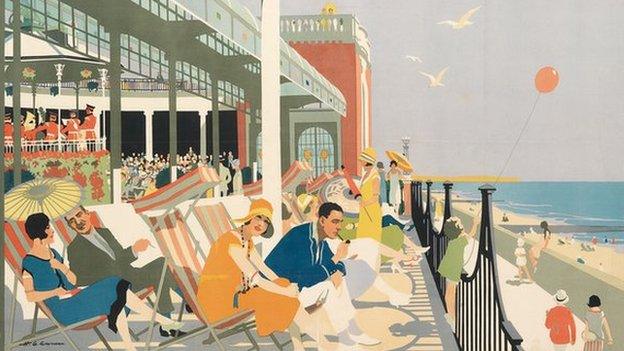Railway posters: Exhibition remembers Frank Henry Mason
- Published
They evoke an era when train travel was still an adventure. Now an exhibition is highlighting the work of one of the country's best-known exponents of railway posters - prints that are often now worth more than the original artwork.
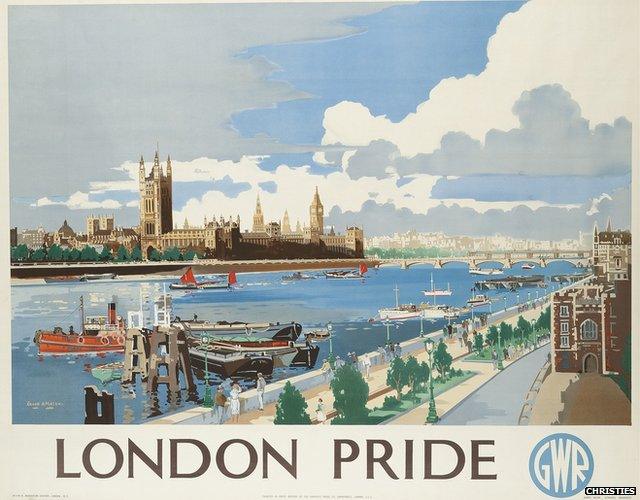
An example of Mason's work for the Great Western Railway
Adorning railway platforms up and down the country, lavishly-coloured posters advertised a myriad of UK destinations that were still a mystery to many in the first half of the 20th Century.
Fine artists of the day were recruited by the major railway companies to conjure up images that would tempt millions of people to take their summer holiday in destinations from Withernsea to Whitley Bay.
And Frank Henry Mason was one of the best.
Born in 1875 in Seaton Carew, near Hartlepool, Mason was a recognised marine artist lured by one of the largest railway companies, LNER, to create scores of posters for its mainly coastal stops between London and Scotland.
For 51 years from 1910, Mason went on to create some of the most iconic railway posters - some of which now sell for thousands of pounds each.
A retrospective of his finest work is on show at Hartlepool Art Gallery.
Edward Yardley has written a book about Mason's life, external and career, describing him as one of Britain's most innovative poster designers.
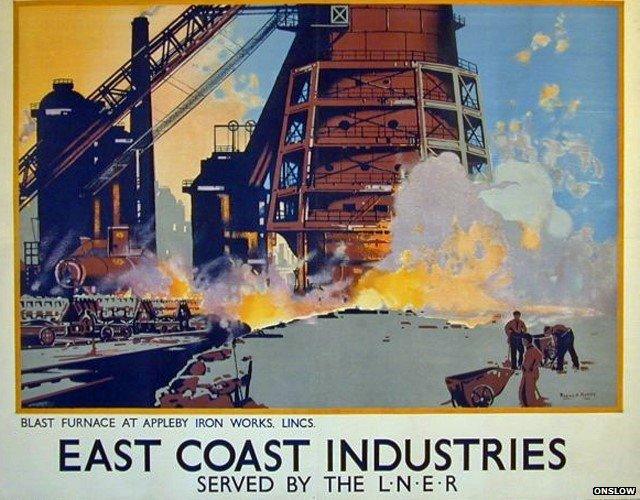
Many of Mason's images featured industrial subjects
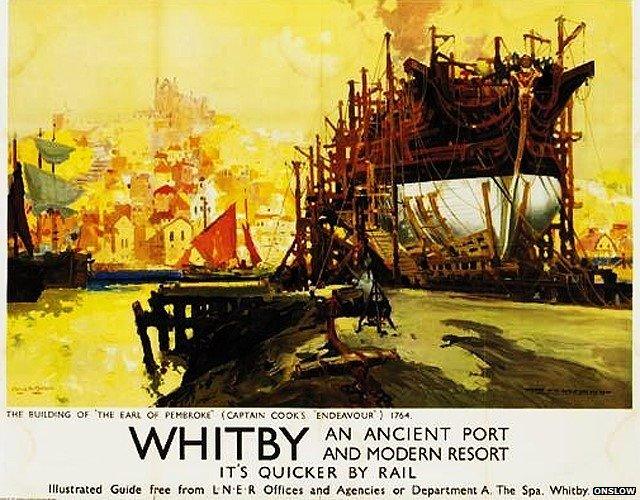
Trained as a fine artist, Mason used vibrant colours
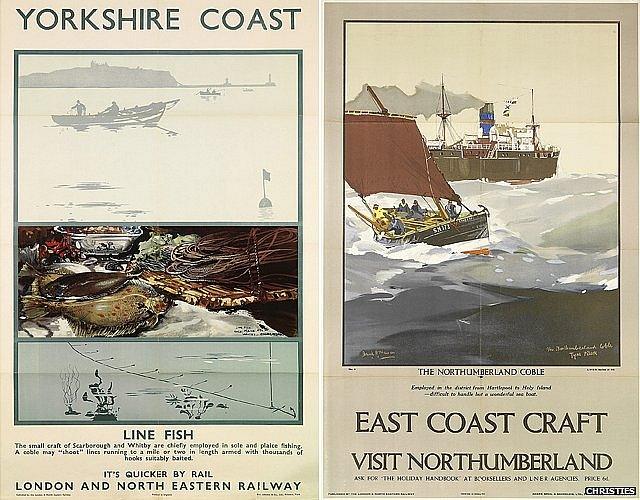
Mason was at his best exploring marine and coastal scenes
"Mason was recruited by LNER on the back of his reputation as a marine artist," he said. "But he wasn't a one-trick pony and could turn his hand to almost anything.
"The LNER had a much bolder and experimental attitude to posters than its rivals and this showed in their use of people like Mason, who had been fine artists in their own right. The results were amazing.
"In 1927 Mason was one of five artists given exclusive contracts with LNER to create 20 or so posters every year.
"He continued to work for them until all the railway companies were merged into British Rail in 1948.
"They [artists] would be given a subject or location and produce a rough copy, mostly in watercolour, which would ultimately by lithographically transferred to a poster.
"Even though photography was around, you got very few photographic posters. The railway companies were acutely aware of the impact that poster art could have in terms of promotion - so much so that exhibitions were organised at which the best examples were sold off."
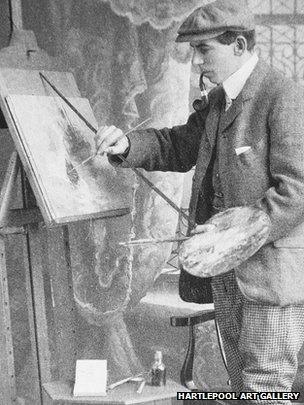
Frank Henry Mason, who died in 1965, specialised in coastal and industrial scenes
Nicolette Tomkinson, an expert in poster art at Christie's said artists like Mason used traditional styles to stunning effect.
"Some of his work is really fantastic," she said.
"With someone like Frank Mason, you can see that his style is very traditional and also features a lot of industrial scenes, such as those showing the East Coast and fishing in East Anglia.
"They include a lot of detail and are great pieces of history and great examples of advertising art.
"In terms of value, most of these will fetch around £1,000, but some of the more exceptional ones will go for a lot higher - up to £6,000.
"Interestingly, with this type of work, the posters are more valuable than the original artwork.
"This is simply because the quality of the final poster is so much higher than the original artwork which is normally quite small. After all, the end result was to design a poster - not to create a saleable work of art.

Some of Mason's work, like this poster of the steam train "Coronation", sells for thousands of pounds
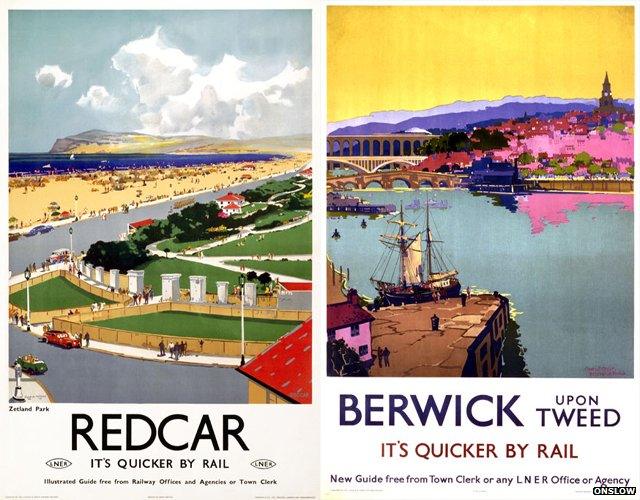
Many of the posters depicted coastal resorts
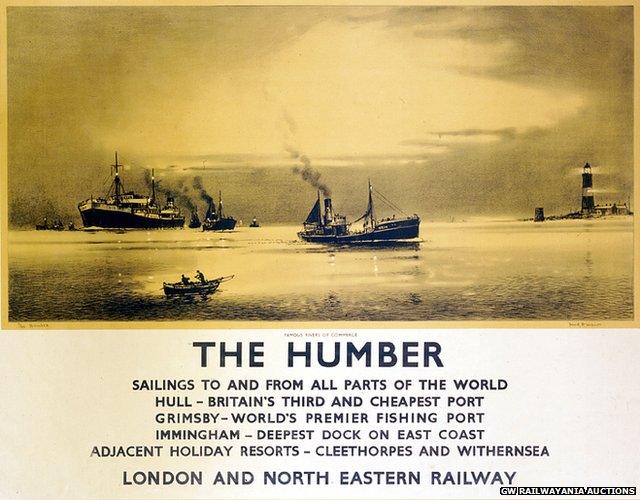
On rare occasions Mason used pen and ink to create his posters
"The 1920s and 1930s are generally considered to be the heyday of the railway poster and the best designs are usually from that period.
"The elegance and the Art Deco feel is clear to see in a lot of the example from that era. The colours are very simple, but also very strong and are really effective.
"These types of posters were designed to be used just for a relatively short period of time and then they would be pasted over. But at the time, that's how people got their information.
"They were up on station platforms and this was often likened to an outdoor gallery because it was something a lot of people looked forward to seeing.
"There isn't really an equivalent genre of advertising now and that's why they're so special. The captured a moment in time which can never be repeated."
Ashore and Afloat: The art of Frank Henry Mason, can be seen at Hartlepool Art Gallery until 30 May.
- Published11 October 2014
